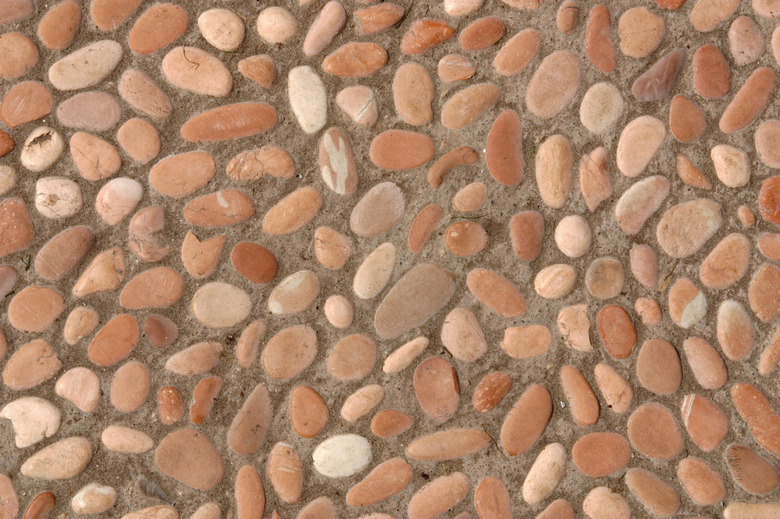How To Resurface An Aggregate Driveway
Things Needed
-
Power washer
-
Scrub brush
-
Vinyl concrete patching compound
-
Putty knife
-
Trowel
-
Roller brush
-
Bonding adhesive
-
Concrete mix
-
Hose
-
Gauge rake
-
Screed board
-
Shovel
-
Decorative aggregate
-
Board
-
Stiff broom
-
Sealer
-
Roller brush
The term aggregate refers to the crushed rocks added to cement to increase the strength and durability of concrete. On an exposed aggregate driveway, colorful stones are laid on top of wet concrete to add a decorative, unique touch. Over time, pieces of aggregate can dislodge if the concrete becomes brittle or water damaged, leaving unsightly ruts behind. Resurfacing an aggregate driveway is simple and prevents the damage from spreading.
Step 1
Remove grime and grease stains with a power washer and a scrub brush. Any debris remaining on top of the driveway will weaken the bond with the new aggregate.
Step 2
Fill any cracks and holes created by dislodged aggregate with vinyl concrete patching compound using a putty knife and trowel. Tamp the compound and wait a few hours for it to dry.
Step 3
Use a roller brush to apply a coat of bonding adhesive over the entire driveway.
Step 4
Mix a package of concrete and water in a concrete mixer until it is thick and spreadable. Tilt the mixer over the surface and spread it with a gauge rake. Pull a screed board over the driveway to make the concrete level.
Step 5
Use a shovel to scatter decorative stones evenly over the surface. Press the aggregate into the wet concrete with a wood board, pushing just hard enough to embed the rocks in the wet concrete. Wait about two hours for it to begin hardening.
Step 6
Hose off the surface and use a stiff broom to brush off the thin top layer of cement. Expose only the top of the aggregate. If the depth of exposure is too much, the rocks will soon dislodge.
Step 7
Roll a coat of penetrating sealer over the driveway with a roller brush after it cures for about a week. Filling the porous surface helps guard it from future water damage.
